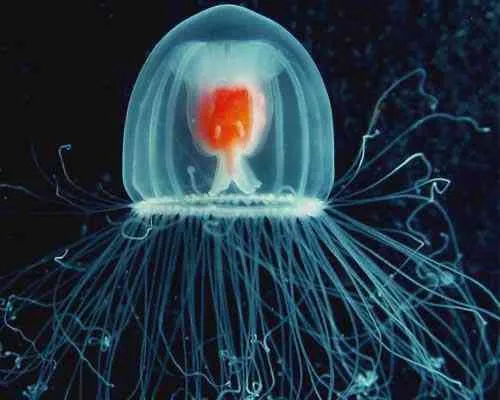
Turritopsis dohrnii, the immortal jellyfish, is a species of small, biologically immortal jellyfish found in the Mediterranean Sea and in the waters of Japan. The immortal jellyfish was discovered in 1883 in the Mediterranean Sea. Amazing isn't it, imagine after reaching maturity you can go back to the immature stage like a reset button. Like all jellyfish, Turritopsis dohrnii begins life as a larva, called a planula, which develops from a fertilized egg. A planula swims at first, then settles on the sea floor and grows into a cylindrical colony of polyps. These ultimately spawn free-swimming, genetically identical medusae—the animals we recognize as jellyfish—which grow to adulthood in a matter of weeks.
Fully grown, Turritopsis dohrnii is only about 4.5 mm (0.18 inches) across, smaller than a pinky nail. A bright-red stomach is visible in the middle of its transparent bell, and the edges are lined with up to 90 white tentacles. These tiny, transparent creatures have an extraordinary survival skill, though. In response to physical damage or even starvation, they take a leap back in their development process, transforming back into a polyp. In a process that looks remarkably like immortality, the born-again polyp colony eventually buds and releases medusae that are genetically identical to the injured adult. In fact, since this phenomenon was first observed in the 1990s, the species has come to be called “the immortal jellyfish.”
The cellular mechanism behind it—a rare process known as transdifferentiation—is of particular interest to scientists for its potential applications in medicine. By undergoing transdifferentiation, an adult cell, one that is specialized for a particular tissue, can become an entirely different type of specialized cell. It’s an efficient way of cell recycling and an important area of study in stem cell research that could help scientists replace cells that have been damaged by disease. We have heard of imaginary animals like the Phoenix but this is no myth.
©Virtualone. 2017